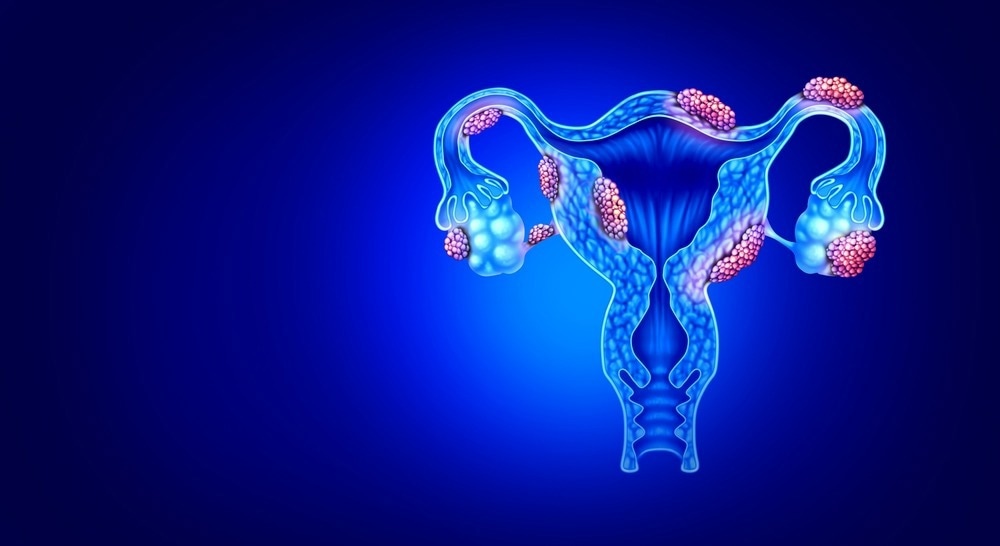 Interview conducted by Danielle Ellis, B.Sc.Jan 19 2023
Interview conducted by Danielle Ellis, B.Sc.Jan 19 2023In this interview, News Medical speaks to Kate Lawrenson, Ph.D., about their latest research which detailed the molecular profile of endometriosis to help improve therapeutic options for the millions of women suffering from the disease.
Please can you introduce yourself and tell us about your professional background?
I am an Associate Professor in the Departments of Obstetrics and Gynecology and Biomedical Sciences at Cedars-Sinai in Los Angeles. I also serve as the Director of the Women’s Cancer Research Program at Cedars-Sinai and Associate Director of the Postdoctoral Scientist Program.
Endometriosis is a gynecological condition affecting 10% of women worldwide. What is endometriosis, and why has it been under-studied historically?
Endometriosis is a condition where cells that look like the lining of the womb (uterus) are found in the wrong place. Often endometriosis is found in the ovaries or on the lining of the pelvic cavity, but in rarer cases, it can even be found at more distant sites, such as the lungs (thoracic endometriosis).
Endometriosis lesions can grow and bleed, just like the uterus, and can even invade the organs where they are found. This causes many problems, including chronic, often debilitating pain and infertility. Patients often have systemic symptoms, too, such as gastrointestinal disturbances and heightened pain sensitivity.

Image Credit: New Africa/Shutterstock.com
Endometriosis research has been impaired by the limited funding available. Unfortunately, many underfunded conditions disproportionately impact women, so despite being remarkably common, endometriosis is one of the most underfunded diseases. There are many reasons for this, including societal attitudes towards issues that only impact females, and from a medical, social, and political standpoint, endometriosis has been largely overlooked.
Nonetheless, I am optimistic that the tides are starting to change and women’s health issues, including endometriosis, are coming more to the forefront. I hope this increases the funding we need to make a difference for patients.
While most people diagnosed with endometriosis identify as women and are born with a uterus, it’s important to remember that transgender men and people without a uterus (e.g., due to a hysterectomy or a congenital disorder) can also be impacted, and it’s important we don’t overlook these groups of patients in our research.
What is the current state of endometriosis therapeutics, and what is hindering the progression of this field?
Management of endometriosis with medication usually involves the use of drugs that can suppress the growth of the lesions by lowering estrogen levels in the body (such as with combined oral contraceptives - ‘The Pill’). Many patients will use analgesics to help manage their pain. However, often patients experience side effects of therapy, or after a while, the treatment stops working.

Image Credit: Lightspring/Shutterstock.com
Treatments that suppress the lesions are incompatible with pregnancy and usually don’t help improve fertility because the underlying cause is still present. Some patients undergo surgery to cut out (excise) or burn (ablate) lesions. Nonetheless, recurrence is fairly common, and around half of the patients who undergo surgery will undergo additional procedures.
It’s important to recognize that endometriosis is a chronic disease requiring treatment for decades. Comprehensive approaches to care are likely to achieve the best outcomes for patients, for example, by including (as needed) - physical therapy for pelvic floor dysfunction, treatments for centralized pain, and cognitive behavioral therapy and mindfulness-based therapy. Many physicians recommend a healthy diet, good sleep hygiene, and exercise to help manage living with endometriosis.
How did you conduct your study, and what were your main findings?
We have seen a revolution in genomics over the last five years that has made it possible to study individual cells much more easily, cheaply, and quickly. This means that for each patient, we can now generate data points for thousands of individual cells, whereas previously, those cells would have been combined to create a single sample for analysis. This new level of precision makes a huge difference for endometriosis, where the lesions can be small (often just a few millimeters in diameter) and made up of multiple different cell types that conspire to cause disease.

Image Credit: SurfsUp/Shutterstock.com
My laboratory developed the expertise in using single-cell genomics to profile human tissues, and we teamed up with surgeons and pathologists to create a cell atlas of endometriosis. We were able to show that endometriosis in the ovary (endometrioma) is quite different from endometriosis in the pelvic cavity and that endometriosis cells respond differently to female hormones compared to cells in the womb. We were also able to see that genetic mutations in endometriosis impact gene expression, and that potentially helps endometriosis to alter the tissue it is invading.
How will your findings lead to better care for endometriosis patients? What is next for you and your research?
The absence of large-scale genome-wide molecular profiling data has hindered endometriosis research. Our study, along with others, has given us an important first look at the molecular profiles of human endometriosis. Efforts by our team and other researchers will continue to grow this important resource and delve into features of endometriosis in groups we were unable to look at – endometriosis in women without pain, for example, or in adolescents.
We are now using this information in the laboratory to address two major unmet clinical needs. The first is to try to identify new biomarkers of endometriosis that can be used for diagnosis or personalized risk stratification likely when combined with lifestyle, genetic, and family history information. The second is to test new therapies that aim to normalize the altered behavior of endometriosis cells.
Where can readers find more information?
About Kate Lawrenson, PhD
I lead a multidisciplinary research laboratory at Cedars-Sinai in Los Angeles, and my whole career has been dedicated to the study of unmet needs in women’s health. My interest in endometriosis was first piqued as a Ph.D. student when I met an endometriosis patient in one of the gynecology clinics in which I was recruiting patients for our study. The story of her myriad unmanageable symptoms left a lasting impression on me, and I began to find opportunities to perform endometriosis research, first focusing on endometriosis-associated ovarian cancers and, later, building an endometriosis research program. This resulted in the development of one of the only cell line models of endometriosis, explorations of the genetic links between endometriosis and ovarian cancers, and, most recently, a single-cell atlas of endometriosis.
The Lawre nson Laboratory at Cedars-Sinai involves experimental bench research and bioinformatics to study molecular landscapes in disease, focusing primarily on endometriosis and ovarian cancers. We also run two clinical studies designed for studying the causes of endometriosis and gynecologic cancers for the discovery of new biomarkers and therapeutic targets.
nson Laboratory at Cedars-Sinai involves experimental bench research and bioinformatics to study molecular landscapes in disease, focusing primarily on endometriosis and ovarian cancers. We also run two clinical studies designed for studying the causes of endometriosis and gynecologic cancers for the discovery of new biomarkers and therapeutic targets.
I’m also passionate about mentoring, particularly supporting women and underrepresented minorities. As the Associate Director of the Postdoctoral Scientist Program at Cedars-Sinai, I’ve mentored a number of students, fellows, interns, postdoctoral researchers, and staff scientists through successful career-enhancing research. My leadership activities focus on building multidisciplinary teams in endometriosis and women’s cancers through my leadership role as Director of the Women’s Cancer Research Program at Cedars-Sinai.
In addition to my affiliation with Cedars-Sinai, I have published an estimated 90 peer-reviewed manuscripts, reviews, and book chapters.